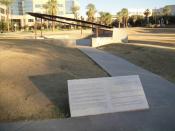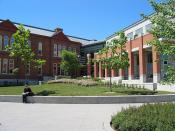Biological Basis of Fear
Abstract
With the recent terrorist attacks on American soil, many individuals are physiologically responding in a similar fearful way. Many Americans have been impacted by the events of September 11, 2001, and the incidents of postal terrorism with anthrax following the attack. Some individuals are having difficulty coping with the tragedy, especially those who were directly impacted or who witnessed the incidents (Schuster, et al., 2001). What causes humans' tendency to respond in this manner? The nerve center for these fear reactions is a portion of the brain known as the amygdala (Nutt, 2001). What are psychologists doing to help people manage the physiology of fear and anxiety associated with the current threat of terrorism? Utilizing clinical methods for treating posttraumatic stress disorder will aid psychologists in helping victims cope. It is important to answer these questions at times when the psychological well-being of Americans is at a heightened risk for paranoia.
Biological Basis of Fear
Imagine walking through the woods, and you see a coiled snake lying across your path. Instantly, before you even think "snake!" your brain begins to respond fearfully to the danger. With the recent terrorist attacks on American soil, many individuals are physiologically responding in a similar fearful way. What causes humans' tendency to respond in this manner? What are psychologists doing to help people manage the physiology of fear and anxiety associated with the current threat of terrorism? It is important to answer these questions at times when the psychological well-being of Americans is at a heightened risk for paranoia.
Emergent worries over 'postal terrorism' involving anthrax have stimulated for many a wave of paranoia. Anthrax, which was mailed to the capitol office of Senator Tom Daschle, was the first biological weapons attack on our nation's capitol (The Economist,


